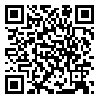BibTeX | RIS | EndNote | Medlars | ProCite | Reference Manager | RefWorks
Send citation to:
URL: http://jdm.tums.ac.ir/article-1-292-en.html
Background and Aim: Determining correct working length in root canal therapy is of great importance in successful treatment. The purpose of this study was to compare the accuracy of two electronic apex locators of fourth generation, Raypex4 and Apit7, in determining working length in vivo.
Materials and Methods: In this test evaluation study performed at Dental School of Tehran University, a total of 32 single canal vital teeth planned for extraction because of orthodontic and prosthetic reasons were selected. Working length determination by each of the two electronic apex locators was performed by two different dentists. These measurements were compared with direct visual measurement after tooth extraction. The dentists working with devices and the endodontist who determined the working length of the extracted teeth as well as the statistician, all were blind regarding the results. The data were compared using binominal distribution test with P<0.05 as the limit of significance.
Results: The accuracy of actual length determination of Raypex4 was 68.8% in the limit of ± 0.5 and 83.3% in the limit of ±1. From the actual length measurements, 75.1% were within the tolerance of +0.5 to-1. The accuracy of the working length determination by Raypex4 was 68.8% within the tolerance of ± 0.5 and 84.3% within the tolerance of ± 1. Taking the tolerance of + 0.5 to -1 mm into account, the accuracy of the instrument was about 78.8%. The accuracy of actual length determination of Apit7 was 65.7% in the limit of ±0.5 and 78.3% in the limit of ±1. Compared to the visual length determination, 78.8% of the actual length measurements were within the tolerance of +0.5 to-1. The accuracy of the working length determination was 62.6% within the tolerance of ±0.5 and 81.3% within the tolerance of ±1. Taking the tolerance of + 0.5 to -1 mm into account, the accuracy of the instrument was about 75.1%.
Conclusion: Raypex4 and Apit7 had similar accuracy in determining the actual length. However, they still can not replace the routine methods of actual length determination.
Received: 2005/03/7 | Accepted: 2005/06/18 | Published: 2013/09/15
| Rights and Permissions | |
 |
This work is licensed under a Creative Commons Attribution-NonCommercial 4.0 International License. |




